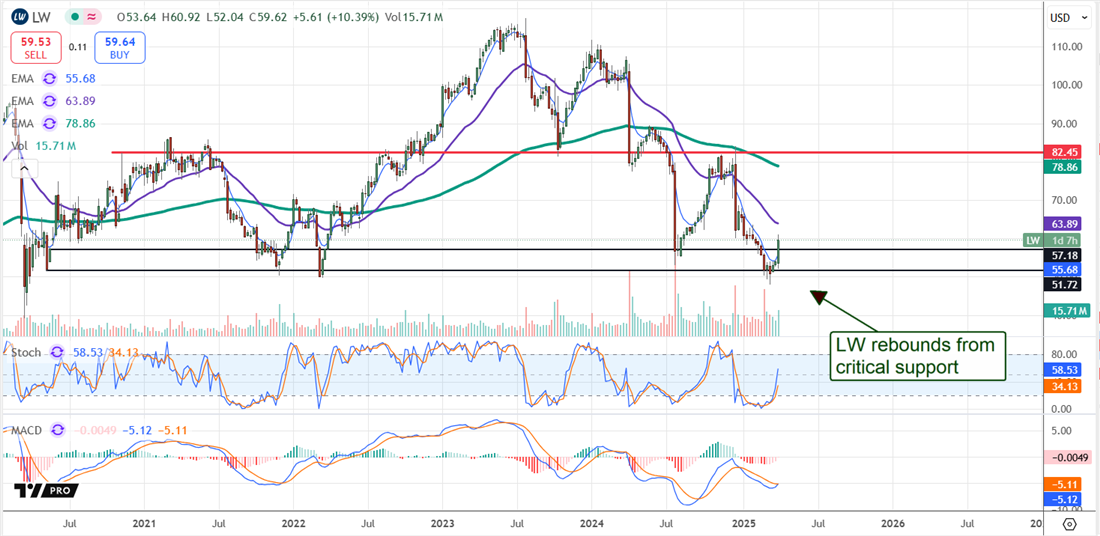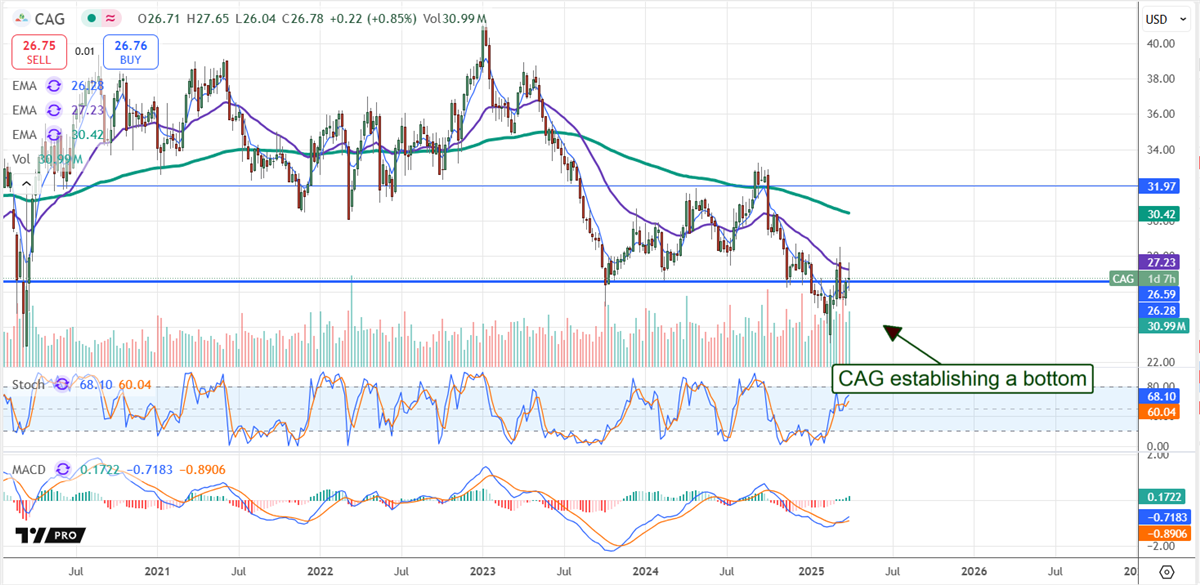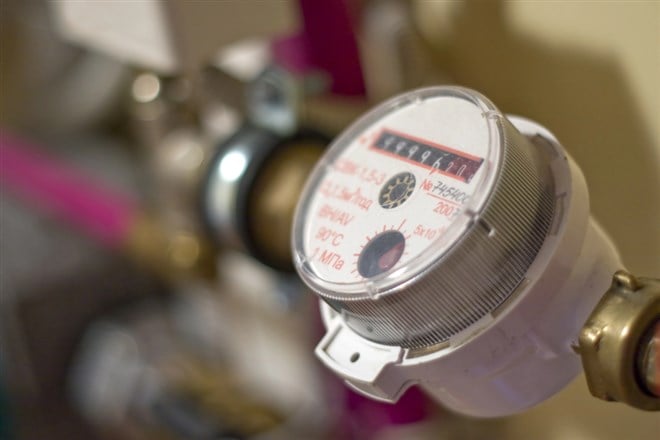Ticker Reports for April 4th
Are Short Sellers Wrong About These 3 Semiconductor Stocks?
Three U.S. chip stocks have 25% or more of their floated shares sold short, indicating a very high level of bearish sentiment among a certain group of investors.
Despite heavy short interest in indie Semiconductor (NASDAQ: INDI), Rigetti Computing (NASDAQ: RGTI), and Impinj (NASDAQ: PI), a deeper analysis reveals long-term growth potential that short sellers may be overlooking.
High Short Interest Ignores $7.1B Design Backlog
First up is autonomous driving equipment stock indie Semiconductor, which makes chips for advanced driver assistance systems (ADAS). As of March 15, INDI has a whopping 27% of its floated shares sold short.
Contributing to the company's high short interest is the fact that indie’s revenue growth has fallen off a cliff. In 2022 and 2023, the company saw revenues rise by 129% and 101%, respectively. And then in 2024, revenues fell by nearly 3%.
This isn’t a problem exclusive to indie. Generally speaking, the automotive semiconductor market has been in a downturn in 2024 and is still trying to find a robust recovery. For example, NXP Semiconductors (NASDAQ: NXPI), a much bigger player in this space, saw its automotive revenues fall by over 4% in 2024.
indie is well positioned when that recovery happens. As of Q3 2024, the company had a backlog of $7.1 billion in design wins. This is massive compared to the company’s $217 million in revenue in 2024. These design wins show the company’s prowess in developing advanced automotive technologies.
Once the auto industry gets out of its rut, indie will be able to start recognizing this backlog as revenue—but that will take years. Although no one knows for sure when this market will recover, indie saw positive sequential revenue growth in the last two quarters, indicating things could be turning around.
Rigetti Suffers From Quantum Computing Being in Early Stages
Next is one of the most wildly trading stocks in recent memory, Rigetti Computing.
As of March 15, around 25% of the company’s floated shares are sold short. Quantum computing advancements by some of the world’s largest companies caused the stock to rise an astronomical 1450% in 2024 despite generating less than $11 million in revenue.
But this misalignment of returns and revenues has introduced a large amount of skepticism around this name that isn’t totally out of place.
Much of the enthusiasm around Rigetti comes from its first-of-its-kind quantum chip fabrication facility, built in 2017. Rigetti's manufacturing leadership in this space could help it become a huge player in quantum computing.
The company can not only use its fab to make its own chips, but it could also serve as a contract quantum computer maker as research around the technology increases. Rigetti is already doing a similar type of work with the United States Air Force Research Lab.
Many believe it will take decades before quantum computing has a transformative real-world impact, but Rigetti could benefit greatly along the way as a key resource for researchers.
Impinj: A Small Chip Stock With a Trillion-Item Opportunity
Last up is chip stock Impinj. The short position in Impinj is large, equal to nearly 26% of the company’s floated shares.
Impinj shares went on a massive run from October 31, 2023, to October 10, 2024. The company’s stock rose 269% over that period, reaching an all-time high. However, since then, the stock has cratered down 62%.
Valuation concerns are likely a key sticking point for short sellers. The stock trades at a 64x price-to-earnings multiple. Much of the stock's recent decline comes as the company sees Q1 revenues falling from the prior year's quarter—a sharp contrast to Wall Street’s expectations for strong, continued growth.
Impinj makes small sensors that companies can use to track their inventory and other items. This gives Impinj a massive opportunity to help companies track these devices, both for more seamless inventory management and theft prevention.
Impinj estimates that companies could use its devices to track trillions of items—such as grocery store items, clothing, packages, and airline baggage—a year. The company estimates that it has penetrated less than 1% of this market. Therefore, despite the near-term setback, Impinj has a huge long-term opportunity to increase the size of its just $2.6 billion business.
(All return data is as of the April 2 close unless otherwise indicated.)
Your Retirement Is Caught in the Crossfire
When Trump took office in 2017, gold was just $1,100 an ounce. By the time he left, it had soared to $1,839.
Now… as new tariffs take effect, gold is breaking records again.
You've hopefully already seen this in action… but gold is surpassing $3,000 per ounce for the first time EVER.
2 High-Yield Values for Dividend Growth and Capital Gains
Lamb Weston (NYSE: LW) and Conagra Brands (NYSE: CAG) are trading at value levels and offering historically high yields for investors in 2025. While Lamb Weston trades at a premium to Conagra, both are at the low ends of their historical ranges and well below broad market averages, and there are reasons. Both are quality consumer staples brands, but Lamb Weston’s potato-centric business is more stable and growing in 2025, while Conagra struggles with headwinds.
Conagra’s headwinds include a consumer shift to lower-price brands and margin contraction in FQ3, which are expected to ease in Q4 and dissipate in F2026. Investors can get into these stocks now, while they are down, and reap the market-beating 2.7% and 5.3% dividend yields until their share prices revert to the high ends of their respective valuation ranges.
Lamb Weston Is the Better Choice on a Performance Basis
Looking at the two from a performance standpoint, Lamb Weston is the better choice in early 2025 despite the higher valuation and lower yield. The company produced growth versus a contraction and outperformed on the top and bottom lines. Its business was supported by positive volume trends offset by lower price/mix, with North American and International business growth.
On the other hand, Conagra underperformed due to weakness in organic sales and pricing; however, it reaffirmed its FY guidance and expects a solid Q4.
Each delivered favorable guidance aligning with the analysts’ consensus reported by MarketBeat. Both are forecasting contractions in full-year revenue.
The critical detail is that both expect margin strength and cash flow improvement due to internal efficiencies and positioning efforts sufficient to sustain mutually robust capital returns. Both are expected to revert to revenue growth in 2026 and maintain healthy CAGRs through 2030.

Capital Returns: Consumer Staples Are About Capital Returns
Growth is important to a consumer staple stock's price direction but is not the only factor involved. These companies tend to be large and grow in slow, cyclical spurts; the critical details are cash flow, capital returns over time, and sustainability. In this case, capital returns include dividends and repurchases.
Comparatively speaking, Conagra’s dividend is more significant, yielding 5.3% in early April 2025, while Lamb Weston has a better buyback. Buybacks reduced the count by 2% in the first nine months of the year and are expected to continue strongly in Q4 and F2026.
Conagra’s buybacks are much smaller. However, they are sufficient to reduce the share count annually and increase shareholder leverage.
Regarding dividend safety, Conagra pays about 55% of its earnings, and Lamb Weston pays 45%.

Analysts and Institutions Indicate Deep Value in Consumer Staples Stocks
The analysts' trends in late 2024 and early 2025 include some price target reductions and downgrades. Still, the markets for CAG and LW stock overcorrected, opening up profound value opportunities highlighted by institutional activity. LW trades well below the analysts’ lowest price target and CAG at the analysts’ floor, indicating a double-digit upside at the consensus, and the institutions are buying.
Institutional activity in these stocks reverted to buying on balance from selling in Q3 and then ramped in Q4 and Q1 2025. The Q1 2025 activity set a multi-year high, indicating a solid support base and a low likelihood of significantly lower prices.
Technically, the stocks are trading near long-term lows and at value levels. Recent activity suggests they’ve hit bottom and are setting up to rebound. The question is how high the stock prices may get, and it could be a significant gain in 2025. Macroeconomic headwinds are cutting into the growth outlook for stocks across sectors and industries, making low-beta, capital-returning stocks like these very attractive.
Get Your Bank Account "Fed Invasion" Ready with THESE 4 Simple Steps
Starting as soon as a few months from now, the United States government will make a sweeping change to bank accounts nationwide.
It will give them unprecedented powers to control your bank account.
Badger Meter Gets an Upgrade—2 Stocks That Could Follow
Most investors will see Wall Street analysts take a new view on the stock and move past it, only weighing how much upside there could be in that specific pick. However, the true benefit of following analyst ratings and valuation targets is that investors can reverse engineer some of these views into a broader industry or peer group sentiment, which then connects the dots to what the economy might take on.
With President Trump having announced the April 2 trade tariffs—dubbed “Liberation Day” by some—the move could significantly impact the U.S. industrial sector. This is where the biggest opportunity may lie in the coming months and why analysts at the Royal Bank of Canada chose to issue their latest upgrade in this space.
As of March 2025, these analysts saw the tariff theme potentially being a good thing for shares of Badger Meter Inc. (NYSE: BMI), and for a good reason. While there is a justified bullish case in that name, the true turn of events (being more domestic production) could make other names like 3M (NYSE: MMM) and Caterpillar Inc. (NYSE: CAT) potential buy targets as well in the coming months following the tariff implementations.
The Case for Badger Meter Stock
As these companies react to tariffs by boosting their manufacturing and production activity within the United States, there is likely to be a new wave of infrastructure spending on behalf of the United States government. This means new factories, buildings, and even offices, which is where Badger Meter comes into play.
This belief also recently passed the thesis stage, and investors can notice up to $485 million worth of institutional capital making its way into the company over the past quarter alone. This vote of confidence might be only the start of a new path higher, and these analysts know that’s the likely case.
By placing a price target of up to $251 per share on Badger Meter stock, these analysts not only hold the most bullish and recent view on the company but are also projecting a new 52-week high—signaling a potential double-digit rally ahead.
Since Badger Meter now trades at 80% of its 52-week high, realizing this valuation would mean a net potential rally of 322.2% from where it trades today. Investors rarely find such a defensive name sitting on this much upside, making this set-up enticing at best.
A Premium Ahead of 3M
Whenever the broader market is willing to overpay for any given stock, investors can rest in the assumption that there must be a reason for this willingness, and in the case of 3M stock, a 20.2x price-to-book (P/B) ratio means a steep premium to other names in the industry, which trades at an average of only 2.0x P/B today.
Just as exposed to this tariff tailwind as Badger Meter, 3M can deliver a smooth ride higher for some investors willing to get their portfolios working in this area of the economy, and the recent institutional buying activity sure shows this could be the base case moving forward.
Allocators from Wellington Management Group led the most recent institutional buying spree when they boosted their 3M stock holdings by 0.4% as of March 2025, bringing their net position to a high of $79.3 million today. However bullish this decision may seem, it is only a drop in the $3.5 billion institutional buying bucket reported for the past quarter.
Caterpillar Connects the Dots For All
If this belief turns out to be correct and infrastructure spending to build the necessary space to boost domestic production occurs, then there is one stock that can connect it all together in this new wave, and that stock is Caterpillar.
Knowing that the connection exists to make this a potential buy target for other investors, short sellers have decided that the juice isn’t worth the squeeze in betting against Caterpillar. This is why the stock’s short interest declined by as much as 3.6% over the past month alone, a clear sign of bearish capitulation.
Reiterating this thesis’s presence in the market today, up to $6.3 billion of institutional capital also made its way to Caterpillar stock over the past quarter, making it one of the places to be in for those looking into additional upside for the coming months.




